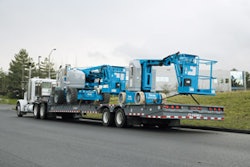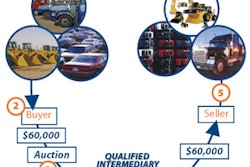The other day I found myself standing at Harrisburg International Airport waiting for my ride. We coordinated on the phone earlier in the day. It was totally clear to me that we were going to "meet at 7:15." At 7:20 my phone rang, it was Steve. He was on his way. He was on the road from the hotel 35 minutes away. He was so proud. He was right on time. Earlier in the day he heard me say, "leave at 7:15" and that is exactly what he did.
It was just a misunderstanding. How many times in the past week have you heard that? You may have been saying it to someone or they may have been saying it to you but the point is that the message was not received as intended. Or what about, that is not what I meant?
Those sentences are just a few examples of the many phrases people use to indicate one simple fact - there was a communication breakdown. The breakdown may be internal - from the project manager to the superintendent, from the superintendent to accounting, from the foreman to the craft worker, from sales to operations, or from senior leadership to the employees. The breakdown may be external - from the superintendent to the subcontractor, from the project manager to the owner's representative, from the lead man to the code inspector, or from the company to the community. The breakdown may be personal - from husband to wife, from parent to child, from friend to friend, or from buyer to seller.
Success in our society is based in large part on our ability to communicate. A recent survey indicated that 47% of CEOs thought being an effective communicator was the most important quality for a CEO. Yet all too often miscommunications occur and we accept them as routine. At best a miscommunication may result in a slight misunderstanding that is easily resolved - a wrong turn perhaps. At worst the misunderstanding may result in loss of life. Yet we resign ourselves to these misunderstandings as part of life, and especially as part of construction. While they may be a part of life, they do not have to be a major part of life.
To reduce miscommunication in your life, you first need to understand the communication process. If you understand the process, you can then troubleshoot when something does go wrong. And by troubleshooting, I do not mean blaming the other person.
The communication process is basically composed of four distinct elements. These elements are:
- Sender
- Receiver
- Method
- Message
In this case, I am the sender and you are the receiver, the method is written, and the message is about communication. Each element need to be considered as you communicate. We will not go into each one of these elements today but I will ask you to do one thing. The next time communication breaks down ask yourself, "what could I have done differently to make that go better?"



















